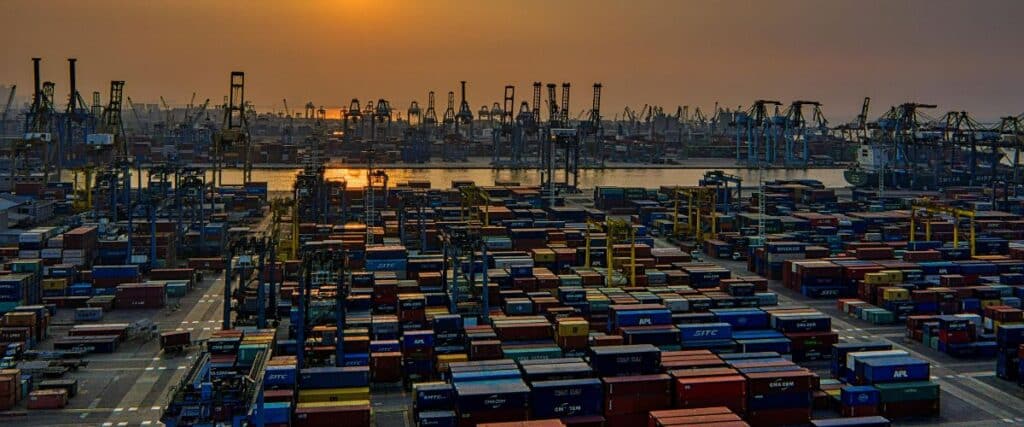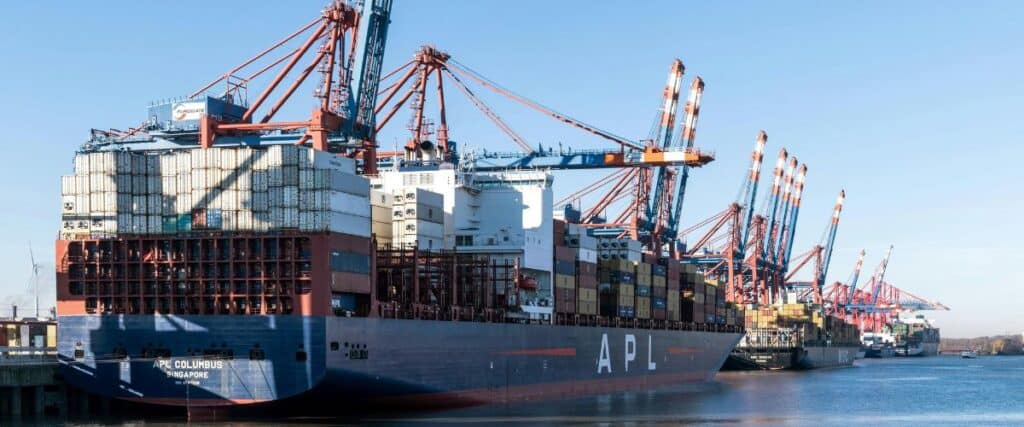Szonja
Scenario Overview
A U.S.-based company needs transatlantic shipping to Spain while optimizing costs, delivery speed, and customs procedures. Depending on their supply chain needs, they have some possible logistics strategies: shipping via the Port of Rotterdam, which offers the flexibility of warehousing or direct road transport to Spain, or opting for a direct sea shipment to Spain, followed by road distribution within the country. Each approach has distinct advantages, and choosing the right one depends on the company’s priorities regarding inventory management, customs clearance, tax optimization, and transit times.
Example 1: Transatlantic Shipping via Rotterdam – Storage or Road Transport to Spain
Step 1: Export Customs Clearance in the U.S.
For transatlantic shipping from the U.S., the goods must first go through export customs clearance, requiring several key documents:
- Commercial Invoice – Provides transaction details and the value of goods.
- Packing List – Describes the shipment’s contents.
- Bill of Lading (B/L) – Issued by the carrier as proof of shipment.
- Export Declaration (EEI – Electronic Export Information) – Filed with U.S. Customs for shipments exceeding $2,500.
Once these formalities are completed, the goods are transported from their point of departure by truck or rail to a major U.S. port, such as New York or Savannah, where they are loaded onto an ocean vessel bound for Europe.
Step 2: Arrival & Customs Clearance in Rotterdam
Upon arrival at the Port of Rotterdam, the shipment undergoes import customs clearance within the European Union. The Netherlands’ ports are known for their streamlined customs procedures, which facilitate quick processing of goods. If the importer has a customs broker or an Authorized Economic Operator (AEO) status, clearance is often expedited, ensuring an even faster processing.The required documents at this stage include:
- Entry Summary Declaration (ENS) – Submitted in advance for security purposes.
- Customs Import Declaration (SAD – Single Administrative Document) – Required for EU import clearance.
- Commercial Invoice & Packing List – Used for customs verification.
One of the major financial advantages of doing transatlantic shipping and import through Rotterdam is the Article 23 VAT Deferment Scheme. Under this regulation, businesses can defer the payment of import VAT, meaning they do not have to pay VAT upfront when the goods enter the Netherlands. Instead, the VAT is accounted for in their periodic tax returns, significantly improving cash flow and reducing immediate financial strain.

Step 3: Releasing the Goods
Once customs clearance is completed, the next step is the release of containers from the terminal. The freight forwarder or consignee must coordinate with the port authorities, shipping lines, and the inland transport provider to ensure a smooth release process. The Terminal Handling Charges (THC) must be paid before containers can be picked up.
Step 4: Choosing the Next Transport Option
At this point, the company has two options for continuing the shipment to Spain:
Option 1: Warehousing in Rotterdam
If the goods are not needed immediately, they can be stored in a warehouse within Rotterdam’s Free Trade Zone. Warehousing in Rotterdam allows for strategic inventory management because of the deferred VAT payments under Article 23 of Dutch tax law. This option is particularly useful for businesses distributing goods across multiple European countries. When needed, the goods can then be released and transported by road to Spain.
Option 2: Direct Road Transport to Spain
Alternatively, if the goods must reach their final destination quickly, they can be immediately transported by road from Rotterdam to Spain, bypassing storage. This option minimizes handling time and ensures faster delivery. The goods travel through the European highway network without additional customs clearance since both the Netherlands and Spain are within the European Union. The CMR (International Waybill) is the key document required for this stage, serving as proof of transport and outlining the responsibilities of the carrier.
By the time the shipment arrives in Spain, the company has successfully leveraged the efficiency of Rotterdam’s port, the financial benefits of VAT deferment, and the flexibility of either storage or direct transport. This route is particularly advantageous for businesses that need a tax-efficient, and flexible logistics solution.
Example 2: Direct Transatlantic Shipping from the United States to Spain by Sea
In this alternative approach, the transatlantic shipping departs directly from the U.S. and is transported to a Spanish port, such as Valencia or Barcelona, without an intermediate stop in Rotterdam.

Step 1: Export Customs Clearance in the U.S.
The export customs process in the U.S. remains the same as in the previous case, requiring a Commercial Invoice, Packing List, Bill of Lading, and Export Declaration (EEI). Once the goods are loaded onto the vessel, they proceed directly across the Atlantic.
Step 2: Arrival & Customs Clearance in Spain
Upon arrival in Spain, the shipment undergoes import customs clearance at the port of entry. Spanish customs authorities require:
- Single Administrative Document (SAD) – Standard EU import document.
- Entry Summary Declaration (ENS) – Required for security and customs processing.
- Commercial Invoice & Packing List – Used for verification.
- Additional documents, such as certificates of origin, conformity certificates, or phytosanitary certificates, depending on the goods.
The importer must also ensure that import duties and VAT are paid unless they have a deferred payment agreement with Spanish customs authorities.
Step 3: Releasing the Goods
The releasing of containers from the Spanish port is the same as in The Netherlands. The consignee or freight forwarder must arrange for container pick-up with the shipping line, and any applicable Terminal Handling Charges (THC) must be settled. Depending on the Incoterms agreed upon in the sales contract, the responsibility for collecting the goods may fall on the buyer or seller.
Step 4: Road Transport to Final Destination
Once the goods are released and transferred onto trucks for distribution, the CMR (International Waybill) is issued to accompany the transport by road. Because the shipment has bypassed an intermediate stop in Rotterdam, this method is particularly efficient for companies prioritizing fast delivery. The Spanish road network allows for nationwide distribution, ensuring that goods reach their intended destinations without unnecessary delays.
This direct sea-to-road transport route reduces overall transit time and handling costs, making it a preferred option for businesses that do not require intermediate storage or tax deferment strategies. The main advantages include faster overall delivery times, and a logistics process that minimizes complexity.
Key Takeaways & Choosing the Best Option
Selecting the best logistics strategy for transatlantic shipping depends on a company’s specific needs. If a business requires greater flexibility in inventory management, VAT deferment, or easy access to other European markets, shipping via Rotterdam provides a strong advantage. On the other hand, if the priority is speed and direct entry into the Spanish market, then a direct sea shipment to Spain is the most efficient solution.
Already picked your best transatlantic route? Now see how to combine it with the efficiency of road transport. [Read more here]
